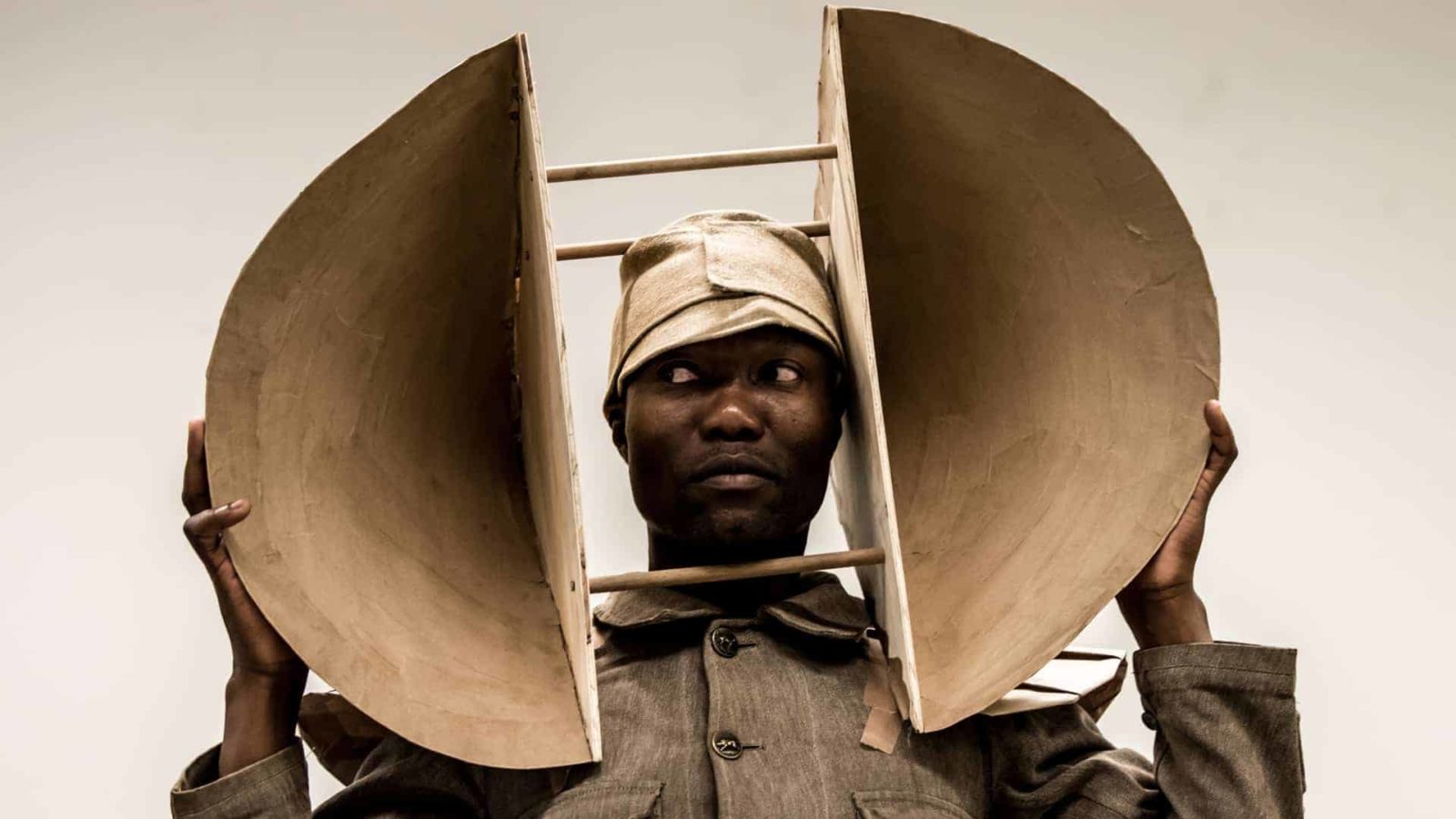You have already taken all I have. Now you are taking my son. The words appear on a vast wall. At center stage a man faces a round microphone, as though he is speaking on the radio in 1918. He is reliving the history of Africa in World War I — a story internationally acclaimed South African artist William Kentridge has come to Mass MoCA to tell.
A hundred years ago, the Great War was still devastating continents. England, France and Germany were still Colonial powers in Africa, and they were fighting across the lands they had taken. They recruited hundreds of thousands of people by force — as many as two million soldiers and workers, carriers and porters moved armies, supplies and artillery in intense heat, and often without roads.
The man at the microphone explains: for every cannon, 300 porters. For every white soldier, three porters to carry food and gear, boots and ammunition.
As he speaks, a man in an army coat carries a gramophone balanced on his head. He walks the length of stage, speaking at counterpoint as though translating, and the wooden box and wide bell cast magnified shadows.
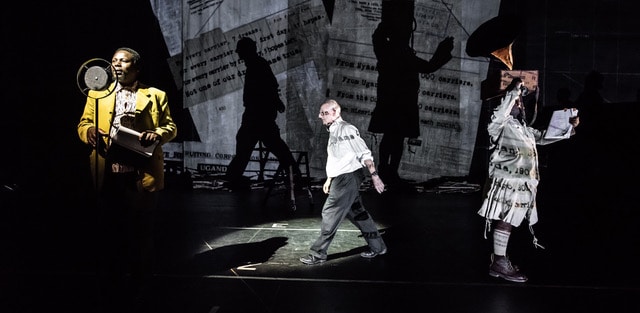
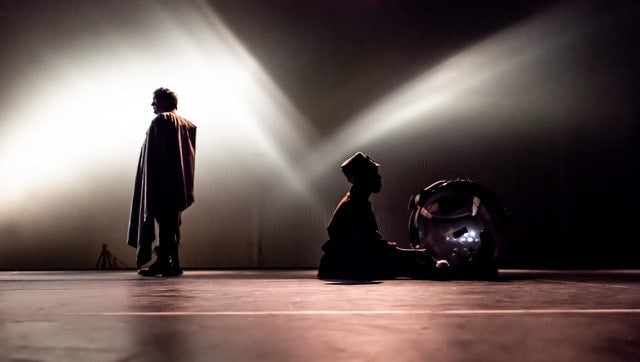
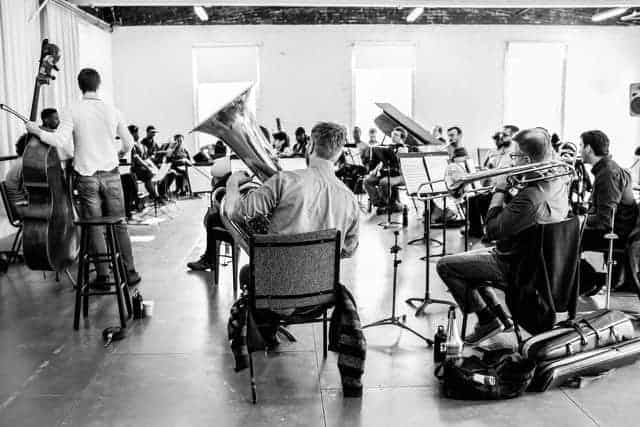


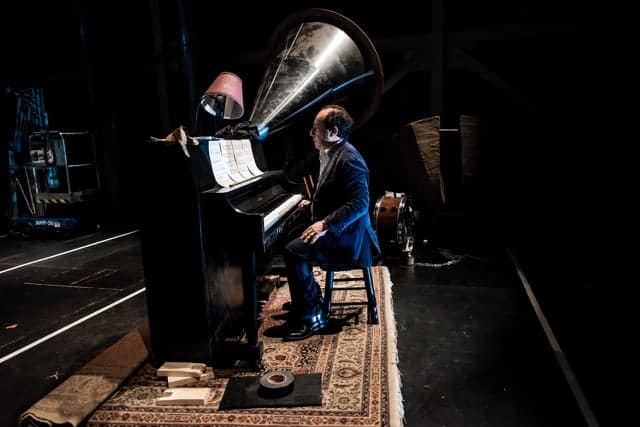
Kentridge arrived in April for in a two-week residency to build and rehearse his new work, “The Head and The Load,” an installation with movement, performance, film and music.
The name comes from a Ghanaian proverb, “the head and the load are the troubles of the neck,” said co-composer Philip Miller, looking to the people who carried packs, shell casings and even disassembled gunships on their backs.
“The music has to look at the pain, what was endured,” Miller said, speaking by phone in a brief break in the ongoing rehearsal. “The sheer numbers of people who died in the war are horrifying. More than 300,000 soldiers from Africa died, and more than 700,000 civilians.”
Miller, one of South Africa’s leading composers, is working with Kentridge as he has often before, and with co-composer and music director Thuthuka Sibisi, a fellow South African musician and former chorus master for the Cape Town Opera Company. They join choreographer Gregory Maqoma and The Knights, an ensemble from Brooklyn, N.Y., and a host of musicians and performers.
Actors cross the stage against 100 feet of projections — a map marked German East Africa, Portuguese East Africa … blurs with dark shapes like coils of barbed wire. Shadows form a flat, open landscape edged by trees.
The work began with the impulse to look at the history of World War I from Africa back to Europe, Miller said. It grew from the emotion of seeing these events from the African continent and voice.
“That story is not told,” he said.
Some of it he has found in an archive of oral histories from prisoners of war. African soldiers were held in camps in Germany, and they told their experiences in more than 2,000 recordings, now digitized.
Along with their voices, Kentridge has brought in military voices — nationalist leaders who hoped that serving in the war might strengthen liberation movements as it shook the balance of power in their countries.
Colonial powers recruited by force. France, England and Germany took people away from their homes and families — took them away from their land in the planting season — drained their communities — to fight in a war that was not theirs, for countries that had seized their lands and taken their resources.
The soldiers were not given guns, Miller said. The Colonial powers were afraid to arm them. They were forcing men into the war but not giving them their rights.
Following those men led him to the sounds and the voices people would have heard on those battlefields, and the languages, Senegalese, Zulu, Swahili.
In the score, Miller and Sibisi invoke music that the porters and soldiers might have heard or played or sang and music of the time — West African music and instruments like the kora, the storytelling of griots and a strong tradition of African choral singing going back thousands of years.
Through these rhythms, they bring Colonial hymns, the sound and tonal music of the Dada movement — sounds of the mechanical world, sounds of music, sounds of war.
At the time of the war, some European composers were looking to Africa for the first time, Miller said, working with sound and word poems, drumming and rhythms. They began to have some awareness of musical traditions outside Europe.
He and Sibisi are creating a collage, musically speaking — Schoenberg with the beats of a hymn, a rhythmical African pulse striking on hymn books. They are interested in musical worlds talking to each other.
Low voices sing over low brass and strings and accordion, gathering informally around a piano with a backdrop like a canvas tent wall. The kora musician, N’Faly Kouyaté, a powerful man in a sleeveless robe and tall hat, runs light touches up the strings.
Kentridge has brought some 100 people together in this residency, said Sue Killam, managing director for performing arts and film at Mass MoCA.
“This is their major opportunity to work on the piece,” she said.
Rachel Chanoff, the museum’s curator of performing arts and film, has been a producer of the work since from the beginning, and Kentridge and his team wanted a place to workshop it before it comes to the Park Avenue Armory in New York in December.
Along with the Hunter Center, Mass MoCA has offered him the fabrication crew; the scene shop; space for painting, working on props and set pieces and making backdrops; and resources for the whole creative team.
“The overall gesture of the idea is powerful,” Miller said. “Song, dance, text, voice, history. The process and the making is powerful also. The way one goes into something like this with a group of creative people — the choreographer, the videographer, extraordinary singers and musicians from different parts of the world.”
This story first ran in the Berkshire Eagle; my thanks to Arts and Entertainment Editor Jeff Borak.

